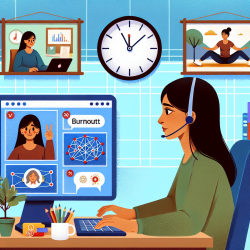Introduction
The journey towards improved wellness for Indigenous communities is not just a path of healing but also a call for practitioners to embrace new methodologies. The research article titled “Every One of Us Is a Strand in That Basket” offers profound insights into the stories of Indigenous wellness and resilience. This blog aims to guide practitioners in integrating these insights into their practice, particularly in the field of speech-language pathology and online therapy services like those provided by TinyEYE.
Understanding Indigenous Wellness
The research highlights the critical role of connection, disconnection, and reconnection in the wellness journeys of Indigenous women living with HIV and Hepatitis C. These themes are not only relevant to physical health but also to communication and social interaction, which are central to speech-language pathology.
Practitioners can learn from the Indigenous approach to wellness, which emphasizes relationality and the integration of cultural practices. This approach aligns with the holistic view of health that considers physical, mental, emotional, and spiritual well-being.
Implementing Research Insights
For practitioners, the key takeaway is the importance of creating culturally safe and supportive environments. Here are some actionable steps:
- Embrace Cultural Practices: Incorporate Indigenous cultural practices into therapy sessions to foster a sense of belonging and identity.
- Build Trust: Establish trust by respecting Indigenous protocols and engaging with communities in meaningful ways.
- Promote Connection: Facilitate connections among clients, encouraging peer support and community involvement.
- Advocate for Decolonization: Recognize and address the systemic barriers that Indigenous communities face in accessing healthcare.
Encouraging Further Research
While the research provides valuable insights, it also highlights the need for further exploration. Practitioners are encouraged to engage in collaborative research with Indigenous communities to deepen their understanding of culturally appropriate care.
By participating in research that prioritizes Indigenous methodologies, practitioners can contribute to the development of more effective and inclusive therapy models.
Conclusion
Integrating the insights from this research into practice can lead to better outcomes for Indigenous children and communities. By valuing Indigenous knowledge and practices, practitioners can help create a more equitable healthcare system.
To read the original research paper, please follow this link: “Every One of Us Is a Strand in That Basket”: Weaving Together Stories of Indigenous Wellness and Resilience From the Perspective of Those With Lived and Living Experience With HIV/Hepatitis C Virus.










